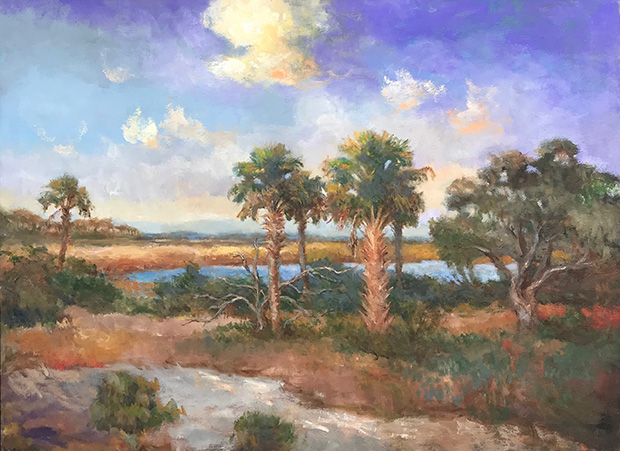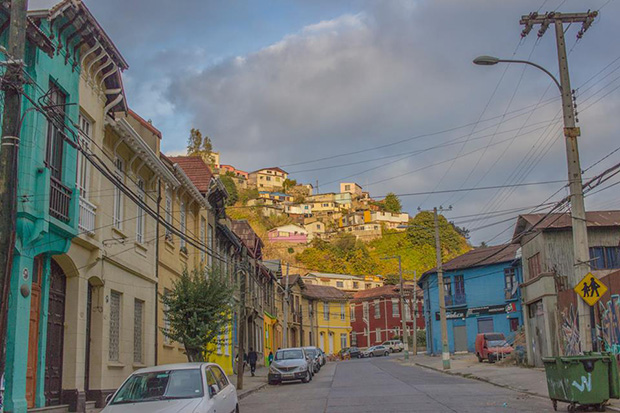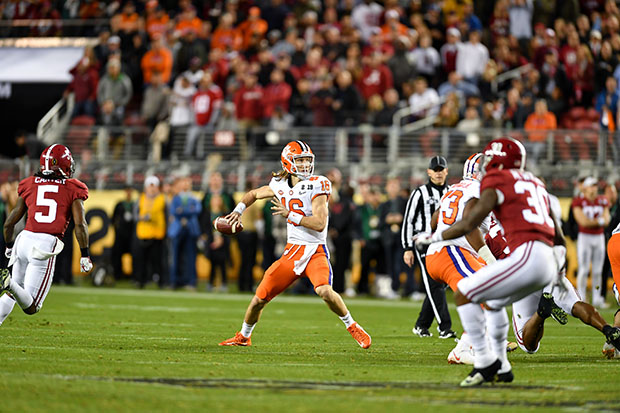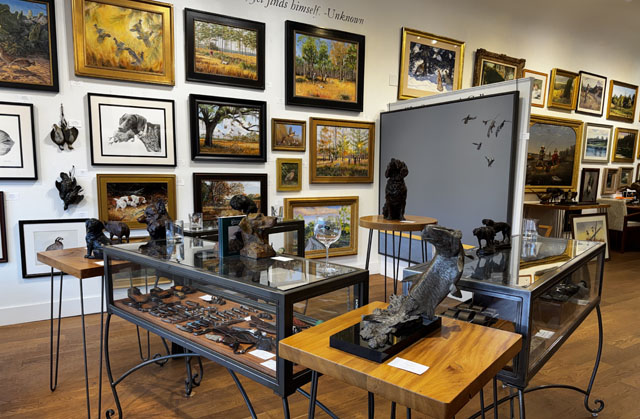In Plein Air
03 Jul 2019
Lowcountry artist Jim Darlington brings the outdoors in
By Jenny Peterson

Perhaps you’ve seen Lowcountry artist Jim Darlington standing before his easel, paintbrush in hand, on Sullivan’s Island, capturing an iconic Lowcountry marsh or an endless beach with his quick brushstrokes on canvas.
His artistic style is called Plein Air, a method of painting outdoors that's much different from studio painting. It takes focus, improvisation and speed – after all, the waning sun and moving clouds can drastically change within a few hours.
“You feel like you almost own the scene and the place. You paint, and the day is captured. It's there on the canvas; it hasn’t disappeared,” Darlington said. “You kind of ‘collect that day’ when you paint that scene, and you know that you might not ever see that exact scene again.”
A longtime South Carolina native and creative explorer, Darlington finds and records secluded and special Lowcountry scenes, giving viewers a unique snapshot of a world he loves.
“I’m influenced by all the impressionists,” he said. “I’m into loose brush strokes and the interpretation of color. When you are painting outdoors, you only have about an hour-and-a-half, and then the sun moves, and the shadows start changing. It makes you paint quickly and spontaneously.”
He spends several hours each time he works in plein air, often choosing places that will accommodate his easel. He also doesn't limit himself to hard-edged realism.
“I don’t like to precisely draw reality before I paint. When you go around and paint at a location, its a little more free artistically. Sometimes, if you put one spontaneous brush stroke on it, even if it’s not in the exact place as you see it, you have captured the scene's essence to the viewer.”
Born James Brown, the Darlington, S.C. native adopted a new last name to stand out in the art world, a signature done in a deep red usually in the bottom left corner of the painting.
He and his wife, a physician, moved all over the Eastern seaboard before settling on Sullivan’s Island in the 1980s.
Darlington became a member of the Charleston Arts Guild, and his paintings have won several awards at art exhibitions. He used to teach at the previous Gibbs Museum downtown where the current restaurant Husk is now located and now teaches in the Charleston County School District. His paintings hang at the Sandpiper Gallery on Sullivian’s Island and the Jim Dare Gallery in downtown Charleston.
A self-taught artist, he experiments with the Lowcountry scenes using an array of paints and paintbrushes on his easel. He starts most landscapes the same: A focus on the sky and how the clouds linger over the Lowcountry waterways.
“I start out with a large Royal Hardware paintbrush to get a smooth background, and then, as I progress, I move to the smaller brushes,” he said. “You look at clouds, you think they are white. You then put some yellow and orangey tones, and they become warm. If you paint it like it first looked, it doesn’t feel like a hot day. I’m pretty free with the color.”
Darlington doesn’t put people in his landscape paintings, preferring to get lost in the peacefulness and naturalness of Lowcountry waterways. The Lowcountry is his favorite.
“I painted some in the mountains, but I like the coast. I have always been drawn to the coast,” he said. “I like the solace and peacefulness of it. You’re really painting the light – things change so much. A palmetto tree can look like it has a grey trunk or a burnt sienna trunk depending on light coming in. Each palmetto tree is different and each landscape is always fresh.”
While his landscapes are his most recognizable pieces of work, he doesn’t limit his pieces to landscapes. His Sullivan’s Island studio also holds a collection of portraits – some of friends and some of strangers, and even a painting of his wife, which has taken him 15 years to finish.
His philosophy is that only with constant practice and trial and error do you find your masterpiece. “One day, I had the idea for doing a specific cloud over the ocean. That’s all I had before I started painting it and, in the process, all this other stuff comes out. Some of the paintings pop out immediately but sometimes, you’ll go back to a painting a week later. Sometimes I’ve gone back five times before I find just the right version.”
For Darlington, painting is an immersive and transformative experience.
“You are completely absorbed in it. There’s something really valuable about being away from everything and being so absorbed in something,” Darlington said. “When I am painting, I get to block out everything else, and it’s almost a spiritual feeling when you finish a painting. But then, of course, you have to go back to regular life.”












